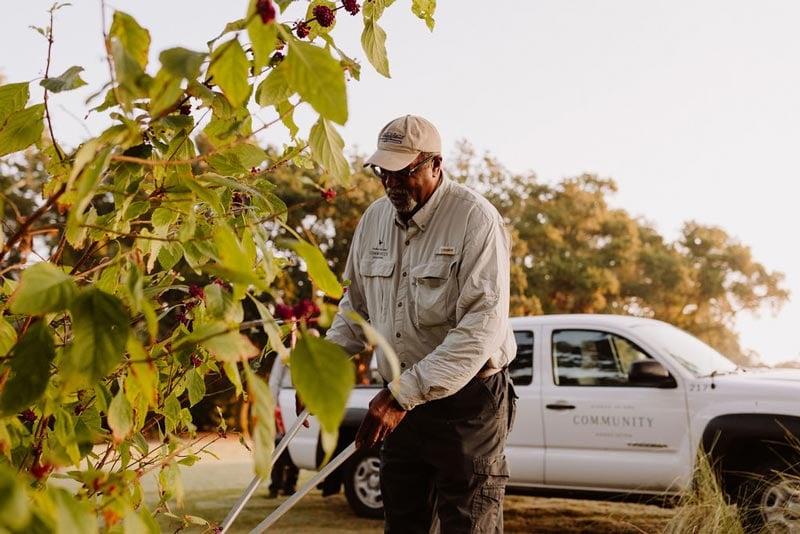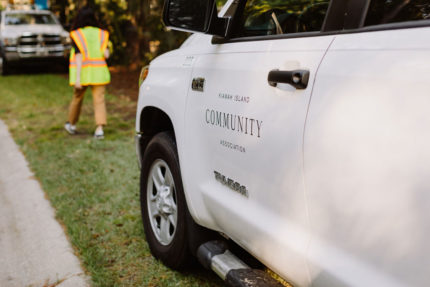Nov
26
2007
From The Blog
Fishing For Trouble
It was early Sunday morning of Labor Day weekend, a beautiful day for frogs and fish. The skies had just opened and rain was pouring onto Kiawah. The golf match of a prominent Washington, D.C. lawyer, an association member and part-time resident, and his physician friend and guest, was not to be. The lawyer suggested that the downpour was a chance to go fishing. The guest eagerly agreed.
In half a dozen fishing attempts spread over several years, the member had caught almost no fish, but that failure was not due to lack of equipment. He grabbed two rods, one of his two casting nets, his well-equipped new tackle box, a large landing net for hauling in the fish, and his new Hudson Bay slicker still in its packaging. With the sharp tackle knife from the tackle box, one of the excited boys cut open the packaging, slicing the slicker in the process. Undaunted, the lawyer donned the damaged slicker, the friend slipped on a borrowed windbreaker, and they headed off. They parked the car on the side of the road and tromped through the woods to a dock at a pond near the member’s house.
After a few fruitless casts of the net and a slight change of location, they hit pay dirt and came up with a net full of shrimp and menhaden. “We set up our rods and the rain began coming down in buckets,” they recalled. They then sat and waited for about an hour, with no action from the fish, the guest growing ever wetter under his regrettably non-waterproof windbreaker. But the rain was warm and the company was good.
Suddenly one of the rods bent over. The member, being a good host, let the guest haul it in. Before he could finish, the other line bent and the member reeled in his catch. Thrilled, they surveyed their two large spottail bass, or red drum. The fish were definitely more than the 15 inches the member knew as the minimum for keeping a fish. He did not know the upper limit, but “I thought it was something like 30 pounds,” he related. “This is enough for dinner,” he concluded.
The member was now ready to return home, but the guest demurred. “After all this time, the fish were biting,” he said. “I was having a wonderful time, an adventure in the warm rain.” He told his friend, “If we catch more, we’ll throw them back.” They couldn’t leave the fish on the dock and risk their flopping back into the water, so they brought them up to the shore and returned to their lines.
A few more minutes passed, and then through the woods appeared two men in uniform, sporting South Carolina Department of Natural Resources (DNR) badges. They began inspecting the fish and the fishing equipment. They then approached the fishermen and asked, “Who caught these fish?” “We both did,” one replied. The DNR men directed them to come up to the shore, telling them the fish looked too big. They measured the fish and informed the member and guest that they were under arrest. The fish were 24 1⁄2 and 26 1⁄2 inches and the allowable limit had just changed one
month before from 24 to 23 inches. “We didn’t know that,” the guest told the men. “We’ll put them back. They’re still alive.” The officers were skeptical, but one of them put one fish in the water, swished it back and forth a few times, and it swam away. The guest took the other fish and did the same, but it didn’t respond.
“It’s done,” one officer said several times. But this physician was not going to give up on his patient so easily, and although he “hadn’t had training in mouth-to-gill resuscitation,” as he joked later, he persisted. The member told the DNR men that the guest was a doctor and he knew how to revive the fish, but they were becoming annoyed. They had no rain gear and were totally drenched. “Its mouth isn’t open,” one of them grumbled. The physician opened the fish’s mouth to let the water in. A few more minutes and gradually, his efforts paid off. The fish began to move, and swam away.
The fishermen’s relief was short-lived, however. “You still have to come up here,” an officer informed them, beckoning to the shore. “I need your ID.” He inspected the ID’s and said, “We have a problem. You’re not a resident.” The member objected. “My car is registered here. We have a house here.”
“You can only be a resident in one place,” the DNR officer replied. “You have a D.C. driver’s license.” He told the men that the fine could be anywhere from $105 to $1000. While a South Carolina
resident might have received a ticket and been able to pay the fine later, he informed these non-resident men that they had to post a cash bond of $105 each or he would take them to jail. He also refused their hopeful suggestions that he charge only one of them, and that he just give a warning since the fish were gone. The member had brought no cash with him, but the guest had his wallet and his cash for the weekend vacation. He pulled out his now totally soaked leather wallet and began extracting $20 bills. In order to separate and count the sodden money, he had to plaster them along the door of the car.
A few minutes later, as the chagrinned guest and offended member pulled away in their car, with nothing but two soggy citations to prove their catch, the horn of the DNR truck honked at them. The men rolled down their window and the officer who had written the guest’s citation handed the guest’s driver’s license back to him. Without that ID, his weekend would have become truly dreadful, as he had a flight home to catch the next day.
Moral of the Story —Know Your South Carolina Fishing Rules
To avoid being embarrassed in front of guests or letting Grandpa be arrested while fishing with the grandkids, get a copy of “South Carolina Rules & Regulations for Hunting, Fishing and Wildlife,”
available free of charge in most sporting goods stores and from the Department of Natural Resources, or view the document online at http://www.dnr.sc.gov/regulations.html.
You need a fishing license:
• To fish from a boat.
• To collect oysters and clams for recreation.
• To cast net for shrimp when using bait.
You do not need a license:
• For fishing the saltwater ponds, marshes and creeks on Kiawah from the bank or a dock.
• To catch crabs for recreation.
• To cast net for shrimp when not using bait (Use caution, however; if you catch something else in the net you will need a license).
• To fish on a charter fishing boat.
What about keeping what you catch?
The safest choice is to enjoy the experience and to release what you catch. The regulations for keeping what you catch are exceedingly complicated, involving the exact species, the size, different methods for measuring (total length, fork length, thickness, head-on versus head-off, etc.) and the number that may be kept, as well as specific seasons for different species. These regulations apply regardless of whether you have a fishing license or do not have one.
Here are some examples relevant to Kiawah:
• Spotted sea trout and weakfish are nearly identical looking, but one must be 12” long and the other must be 14” long to be kept. Limit of 10 fish per person/per day.
• The red drum mentioned in the story above must be between 15” and 23” to be taken home, but black drum must be between 14” and 27”. Limit of five fish per person/per day.
• Flounder (Southern, Summer and Gulf), whether caught on rod and reel, or by “gigging,” must be at least 14″ with a limit of 20 fish per person/per day.
• You can keep only 12 dozen individual shrimp between Dec. 16 and the end of April, but 48 quarts of shrimp at other times.
Residency, for DNR’s purposes, is based on your driver’s license. If you do not have a South Carolina license, even if you own property in the state, you must possess a non-resident fishing license.
For more information on the rules, or to order a fishing license online, please visit the South Carolina Department of Natural Resources on the Web at www.dnr.sc.gov/fish.html.

